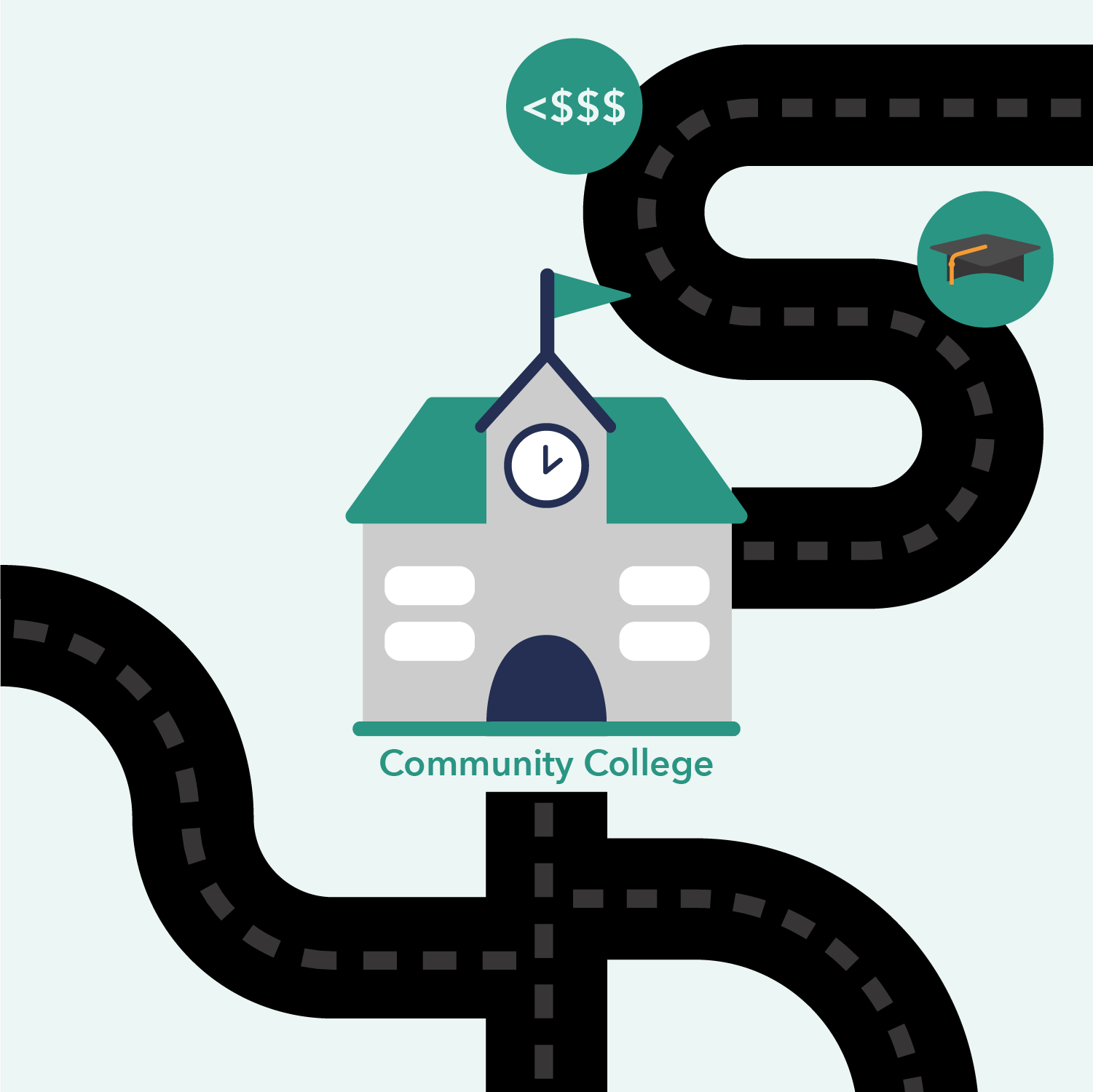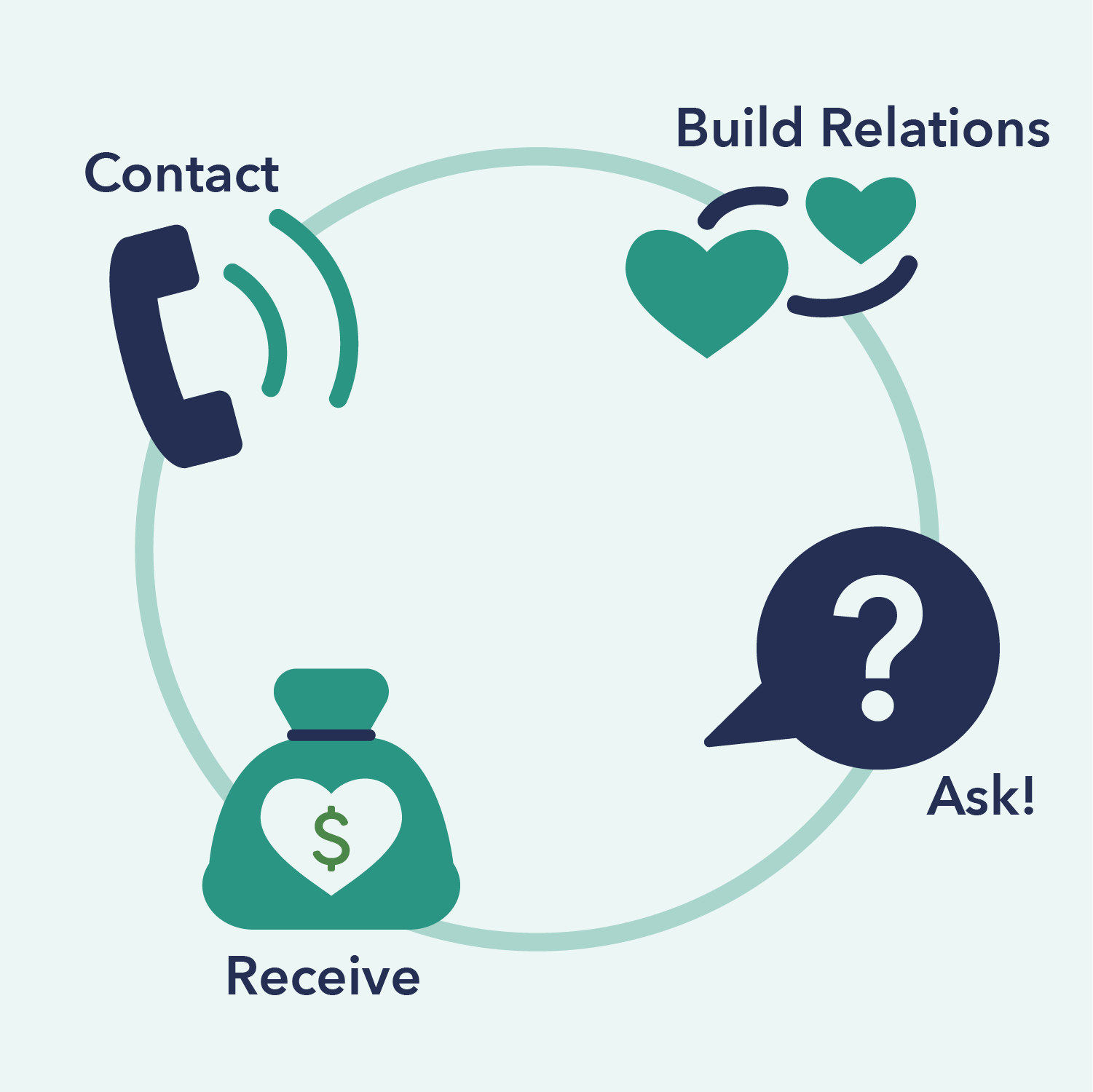Are Community College Alumni Being Ignored?
How to turn challenges into opportunities

As a community college, you don’t have dorms or big sports teams for your alumni to reminisce about over dinners, and you have only a fraction of the students that Big U has. Worse, according to an interview in Currents magazine, the word is that community college alumni "don't engage easily.”¹ So why bother trying?
However, your community college’s alumni network is more valuable than you think. In a 2015 study, the National Student Clearinghouse Research Center discovered that almost half of all students who completed a four-year degree had been enrolled at a two-year institution in the previous 10 years.² This is a huge population of college alumni who shouldn't be ignored.
In fact, community college alumni may be the hidden gem waiting to be discovered – and they could bring incredible value to your college.
Of course, this gem doesn’t come for free. Community colleges face some unique challenges. But with some planning, those challenges can be turned into opportunities — and maybe even donors. Here’s how.

THE CHALLENGE: No dorms, no Greek life, no sports.
Most community college students commute from home; dorms or on-campus housing aren’t an option. Students zip in and out for classes, and they typically aren't spending all day, all week, or all month on campus like their 4-year brethren. Not to mention, no student housing also means no sorority and fraternity houses.
Then there’s the fact that most community colleges have fewer sports teams, and a smaller fan base attached to those sports. While four-year universities can count on big sporting events to bolster school spirit and create lasting memories, community colleges must rely on other engagement options.
Living on campus, participating in Greek life, and attending sporting events are traditional activities that give students a feeling of affinity to their college – the same feeling of affinity that turns them into engaged alumni later in life. So what can your college do to make up for the lack of these nostalgia-worthy perks?

THE OPPORTUNITY: Community colleges change lives in ways four-year colleges don’t.
When it comes to making an impact on students’ personal and professional lives, football, frats, and Friday pizza nights aren’t the only options. Best friends are made at community colleges. Some students go off to four-year colleges that they couldn’t have gone to had they not attended community college first. Other students use community college as a way to get back on track after dropping out of a four-year college, when changing careers, or when re-entering the workforce after raising kids.
Furthermore, for many students, community college is the only way they can afford a post-secondary education — and the impact of that education can be huge. A community college may have more impact on the life of a migrant worker’s child than an Ivy League university has on a wealthy student's life.
Many community college alumni are underdogs. Unsung heroes. People making major life changes. They have stories to tell that are compelling and inspiring. Tap into that spirit, and use those authentic stories to engage your college alumni in a way that no four-year institution can.

THE CHALLENGE: A limited staff and minuscule budget.
Only about half of community colleges had full-time alumni relations employees in 2013.³ And according to our own research, many community colleges have no dedicated alumni relations staff at all.
Even when these colleges do have dedicated staff, their budgets tend to jingle when you shake them. Trying to create an alumni engagement program with a staff of one and no cash seems like mission impossible.

THE OPPORTUNITY: Community college alumni are primed to give, if you only ask them.
The money you need to engage your alumni and attract more donations may be coming your way — all you need to do is ask.
Donations to community colleges actually increased by 7.2% in 2016 — the highest increase on record.⁴ According to Zack Budryk, a writer for Inside Higher Ed, "Community college alumni are willing to provide financial support to their alma mater — community colleges just need to do a better job of communicating to their alumni that support is needed and ultimately making the ask. The number one reason people do not give is because they are not asked.”
However, before you make the ask, of course, you need to build relationships with — and provide value to — your alumni. Smart, low-cost marketing can make this happen without breaking the bank. Here are some ideas:
- Check out this blog post for tips on the most effective ways to use free, fast email.
- Ask a local business to sponsor an annual leadership breakfast, a happy hour, or another event.
- Invite noteworthy graduates to give presentations to alumni.
- Survey alumni on their professional needs; you may be surprised that some of their wishes, like a career-related webinar or continuing education workshop, are inexpensive to implement.
To make the leap from giving value to asking for support, make it personal. Start with raising money for a cause that your alumni care about. (Don’t know what those are? Ask them!) For example, would a scholarship for a high school graduate with a similar profile to a large number of alumni get their attention?
Find something they care about, and they’ll be more likely to engage with your fundraising efforts. No huge staff or budget required!

THE CHALLENGE: No easy way to reach out to community college alumni.
Building a strong college alumni network requires consistent communication. But where should you send this communication? And how should you package it? After all, what community college has the money for fancy mailings, or the time for constant outreach?
Four-year colleges with long-standing alumni relations departments have their content calendars and communications plans all worked out, so everything practically runs on autopilot. You, on the other hand, have to start from scratch.

THE OPPORTUNITY: Online platforms make community college alumni engagement easy.
While you do need to reach out to college alumni personally — for example, through a monthly email newsletter — online platforms are an easy way to give your alumni the opportunity to network, reminisce, and share advice and insights with one another. This user-generated content takes the pressure off your staff to always be the ones interacting and engaging with alumni.
However, traditional social media sites can only provide a ‘one-size-fits-all’ experience, even though college alumni are incredibly diverse. In the age of Netflix and Amazon, alumni expect content personalization that respects them as individuals with differing interests and needs.
A better choice, then, would be to have your own branded social engagement platform (may we recommend CueBack?) that allows you to provide more effective engagement to each individual alum. Not only will you also avoid privacy issues and the sale of your alumni’s data to advertisers, but you will also have full control over your alumni data.
Whatever platform you use, be sure to seed it with questions, ideas, images, and insights that spur networking and reminiscing. Your platform needs to be dynamic and adaptive so that it provides continuous value to community college alumni regardless of each alum’s professional and personal stage of life. Your alumni will develop deep connections with one another while also strengthening their alumni identity and emotional connection to your institution — both of which are proven drivers of giving.
Are you ready to uncover the hidden gem that is your community college’s alumni network? Contact us for a demo of CueBack—the personalized engagement platform that leverages academic research and modern technology to deliver relevant and meaningful content to each alumni. Learn how our cutting-edge AI technology can help further your fundraising goals as well as the goals of other stakeholders such as recruiting and career services.
Additional Sources
1. "Engaging Community College Alumni," CASE, September 10 2018, https://www.case.org/resources/engaging-community-college-alumni.
2. "Two-Year Contributions to Four-Year Completions – 2015," National Student Clearinghouse Research Center, March 24 2015, http://nscresearchcenter.org/snapshotreport-twoyearcontributionfouryearcompletions17/
3. Budryk, Zack. "Reaching Alumni," Inside Higher Ed, May 6 2013, https://www.insidehighered.com/news/2013/05/06/community-colleges-expand-outreach-alumni.
4. McGrady, Wendy. "Positive trends seen in giving to community colleges," The Curtis Group, July 12 2017, https://curtisgroupconsultants.com/positive-trends-seen-giving-community-colleges/
Stay ahead of the curve with CueBack
The world of advancement is changing. Don’t get left behind. Stay ahead of the curve with insights from forward thinkers in the industry who are paving the way for tomorrow’s advancement professional leaders.